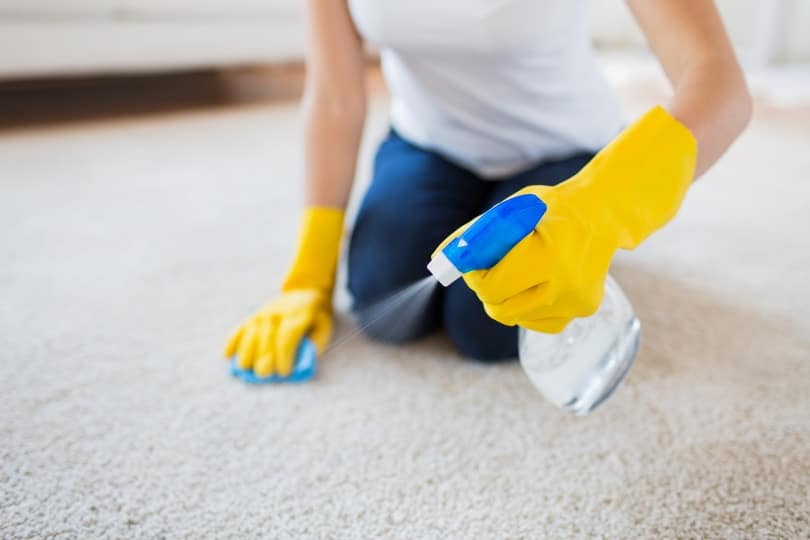
Cleaning up cat vomit is neither pretty nor fun. The first step is physically removing as much vomit as you can. Once that’s done, it’s time to break out the cleaning products. But which one should you choose?
We’ve collected reviews of what we think are the best carpet cleaners for cat vomit. It may not be the most glamorous of activities, but hopefully, this information helps you decide on the right carpet cleaner for you and your nauseous cat. Remember to take your kitty to the vet if the vomiting persists.
A Quick Comparison of Our Favorites of 2024
| Image | Product | Details | ||
|---|---|---|---|---|
| Best Overall |
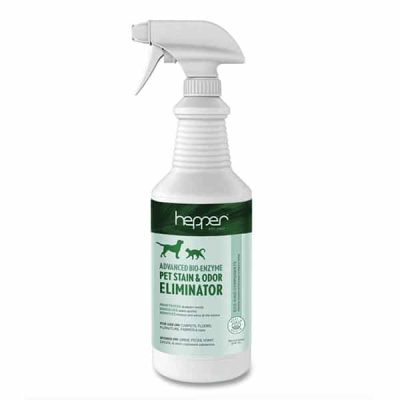
|
Hepper Advanced Bio-Enzyme Pet Stain & Odor Eliminator Spray |
|
CHECK PRICE |
| Budget Buy |
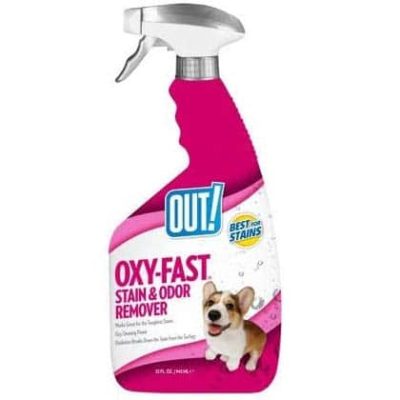
|
Out! Oxy Fast Pet Stain & Odor Remover |
|
CHECK PRICE |
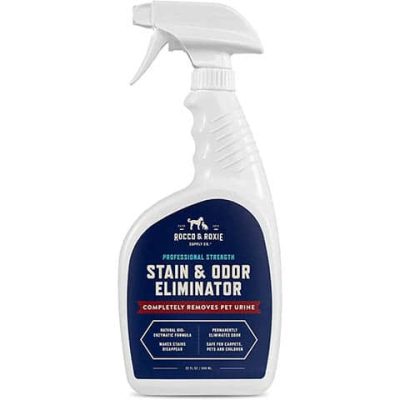
|
Rocco & Roxie Pro Strength Cleaner |
|
CHECK PRICE | |
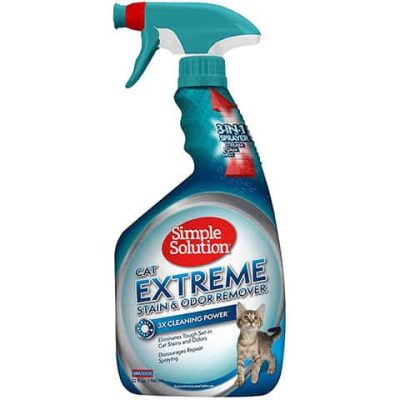
|
Simple Solution Stain & Odor Remover |
|
CHECK PRICE | |
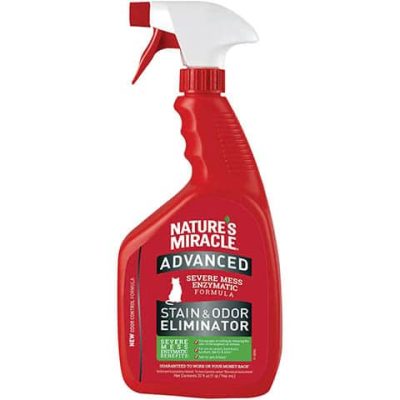
|
Nature’s Miracle Cats Stain & Odor Remover |
|
CHECK PRICE |
The 10 Best Carpet Cleaners For Cat Vomit
1. Hepper Advanced Bio-Enzyme Pet Stain & Odor Eliminator Spray – Best Overall
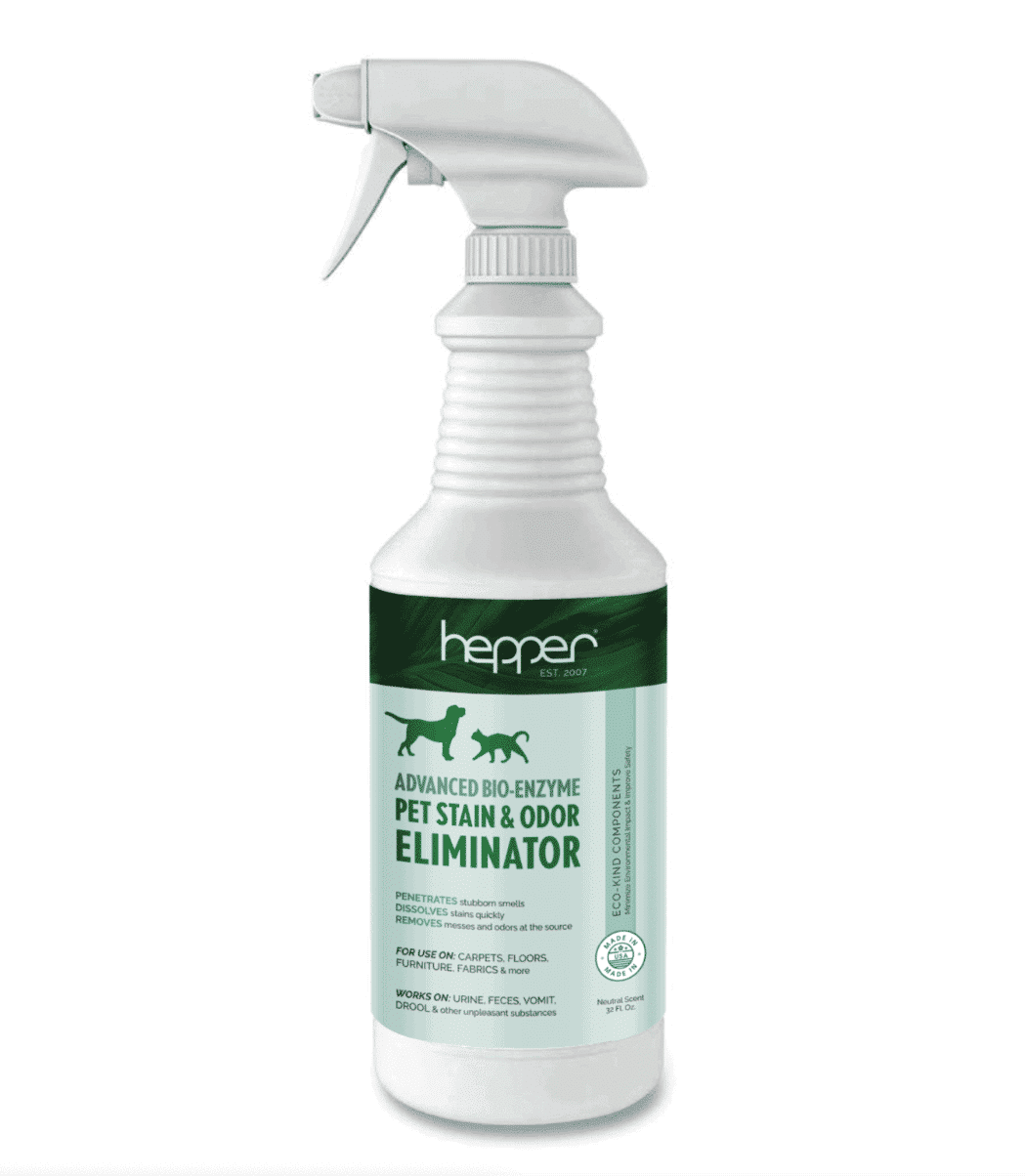
| Type of cleaner: | Enzymatic |
| Pre-mixed cleaner?: | Yes |
| Works on: | Carpets, furniture, fabrics, hard floors |
| Safe for use around cats?: | Yes |
Our top pick for the best overall carpet cleaner for cat vomit is Hepper’s Advanced Bio Enzyme Pet Stain & Odor Eliminator Spray. This spray is an excellent option for any pet parent who needs to get vomit out of their carpet. This spray doesn’t just tackle vomit; it can also handle any pet odors or stains you throw it at!
This solution is safe for carpets, floors, fabrics, and furniture. So, you can use it on anything your cat accidentally messes up.
It comes in a sizeable 32-ounce bottle, so you’ll be able to use it repeatedly after just one purchase. This spray also has a neutral scent. So, your home won’t come away smelling like a chemical plant or a harsh fragrance.
At Catster, we’ve admired Hepper for many years and decided to take a controlling ownership interest so that we could benefit from the outstanding designs of this cool cat company!
- Gentle formula is suitable for any surface
- Neutral scent doesn’t fill the home with a harsh smell
- Large quantity of product
- No refill option
2. Out! Oxy Fast Activated Pet Stain & Odor Remover – Budget Buy
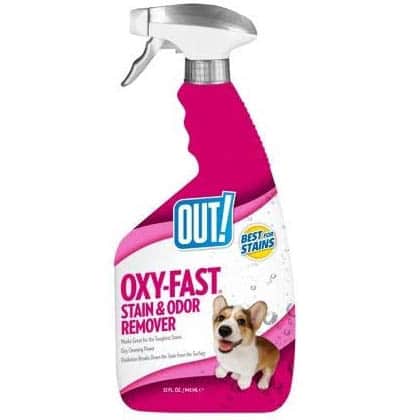
| Type of cleaner: | Oxidizing |
| Pre-mixed cleaner?: | Yes |
| Works on: | Carpets, litter boxes, fabrics, hard floors |
| Safe for use around cats?: | Yes |
Our budget choice carpet cleaner for cat vomit is the Out! Oxy Fast Activated Pet Stain and Odor Remover. Oxidizing cleaners like this one work faster than enzyme cleaners, making this a good choice for those busy mornings when you don’t have time to let a vomit stain soak for a long time. Safe around kids and pets, this cleaner works by causing an oxygen-based chemical reaction to remove stains and odors safely. One of the most reasonably priced but effective carpet cleaners available, Out! Oxy Fast is a great value choice. As always, be careful to test the product to ensure it won’t change your carpet color. Some users report it doesn’t work as well on older vomit stains and doesn’t have a pleasant scent after use.
- Reasonable price
- Works fast
- Less effective on old stains
- No added fragrance
3. Rocco & Roxie Pro Strength Pet Stain & Odor Remover
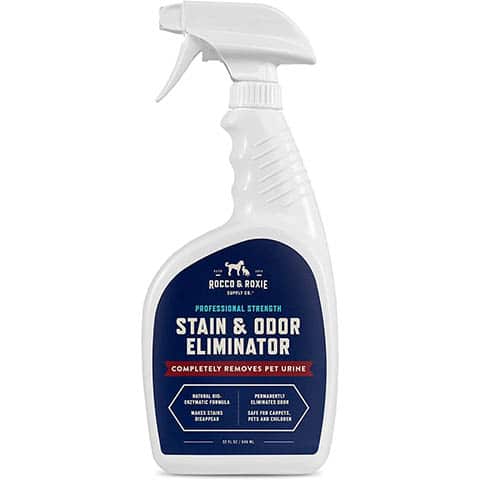
| Type of cleaner: | Enzymatic |
| Pre-mixed cleaner?: | Yes |
| Works on: | Carpet, rugs, upholstery |
| Safe for use around cats?: | Yes |
Unfortunately, some cat vomit stains are so tough you might have to reach for a professional-grade carpet cleaner like this one. The Rocco and Roxie Supply Company Professional Strength Pet Stain And Odor Remover isn’t the most cost-effective option. But if your next best choice is hiring a carpet cleaning service or replacing the carpet entirely, this cleaner still might be the cheaper decision! An enzyme-based cleaner, the bacteria in this product attack and consume the vomit stain, eliminating it. Chlorine-free, this cleaner is a good option for colored rugs and carpets, although you should still test it first. The higher price is the major drawback of this product, but users also report mixed results with older stains and a strong leftover smell.
- Professional strength cleaning power
- Chlorine-free
- Environmentally friendly
- Expensive
- Strong smell, not good for people with sensitive noses
- Less effective on old stains
4. Simple Solution Extreme Stain And Odor Remover
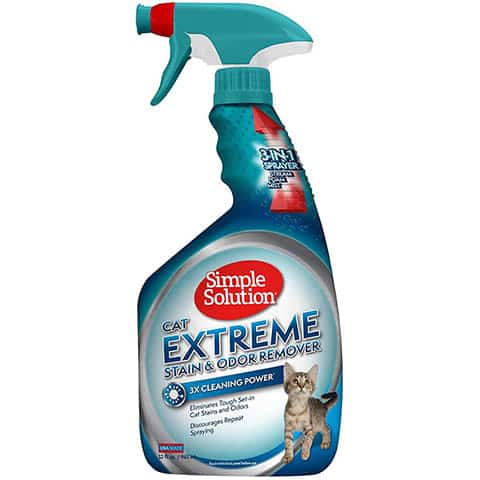
| Type of cleaner: | Enzymatic |
| Pre-mixed cleaner?: | Yes |
| Works on: | Carpet, upholstery, bedding, fabric toys, clothes |
| Safe for use around cats?: | Yes |
Another professional strength enzymatic cleaner but at a more reasonable price, the Simple Solution Extreme Stain and Odor Remover is designed to remove vomit stains when used as directed permanently. The bacteria and enzymes in this cleaner keep working to break down stains even as it dries. A handy 3-in-1 nozzle allows you to pick the right option to deal with surface stains or those more deeply ingrained in the carpet. Users report it has a strong chemical smell, and some have mixed results with getting stains out, although it seems effective at keeping odors at bay.
- Professional strength
- Reasonable price
- Strong chemical smell
- Some mixed results with stain removal
5. Nature’s Miracle Just For Cats Stain & Odor Remover
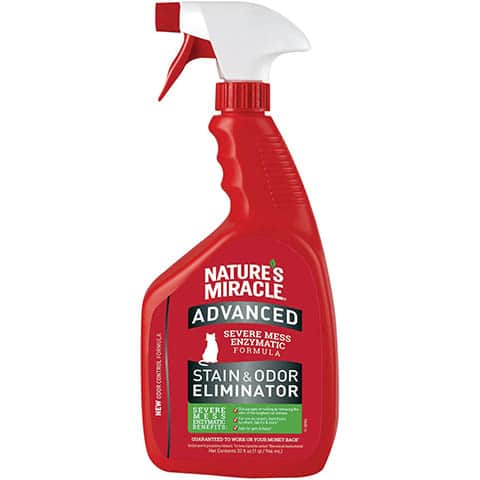
| Type of cleaner: | Enzymatic |
| Pre-mixed cleaner?: | Yes |
| Works on: | Carpets, furniture, fabrics, hard floors |
| Safe for use around cats?: | Yes |
Another great choice for cat vomit carpet cleaner is Nature’s Miracle Advanced Just For Cats Stain And Odor Remover. Nature’s Miracle produces a range of enzyme-based pet clean-up products, and this formula is one of their strongest and most effective. This product contains bacteria that attack and break down your cat’s vomit stain rather than just providing a surface clean. Enzyme cleaners like this destroy both stain and odor, leaving carpets clean and making it less likely that your cat returns to make a mess in the same spot. Pre-mixed and ready to use, this spray also contains a lemon scent, pleasant for humans but disliked by cats, another incentive for kitty to stay away! Make sure to test this product on your carpet before you use it and then follow all directions for best results, as some users report that it discolored their rugs.
- Strong cleaning power
- Easy to use
- May discolor some carpets
6. TriNova Pet Stain And Odor Remover
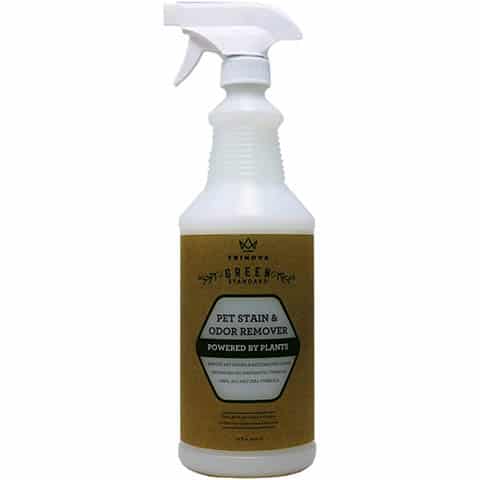
| Type of cleaner: | Enzymatic |
| Pre-mixed cleaner?: | Yes |
| Works on: | Carpet, rugs, upholstery |
| Safe for use around cats?: | Yes |
Made with organic and natural ingredients, the TriNova Pet Stain and Odor Remover is a powerful, professional-grade enzymatic cleaner. This cleaner disintegrates vomit stains from your carpet without using any toxic chemicals. Also available in a gallon bottle, the TriNova cleaner isn’t the most cost-effective choice but does appear to work consistently, based on its glowing reviews. Aside from the cost, the main complaint seems to be regarding the strong smell left behind after cleaning. This product does require some scrubbing to work most effectively. As always, make sure to test this product on your rug before using it.
- Organic and all-natural
- Professional strength cleaning
- Strong smell after cleaning
- More expensive
7. Sunny And Honey Pet Stain And Odor Miracle
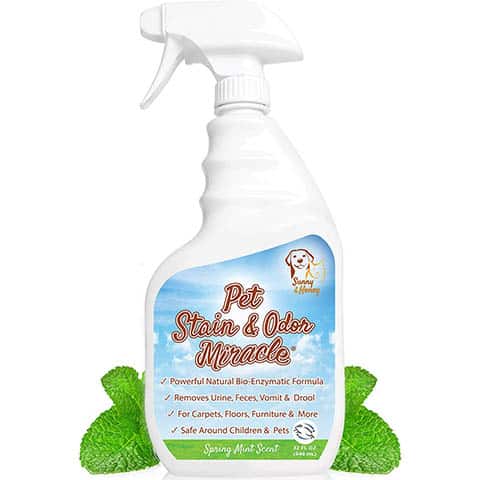
| Type of cleaner: | Enzymatic |
| Pre-mixed cleaner?: | Yes |
| Works on: | Carpet, rugs, upholstery, fabric, hard surfaces, outdoors |
| Safe for use around cats?: | Yes |
Produced by a family-run small business, the Sunny & Honey Pet Stain And Odor Miracle is a popular, all-natural, enzymatic cleaner. Made in the USA, this product is safe to use around kids and pets, non-toxic, and biodegradable, making it another good choice for those looking to avoid chemical cleaners. This cleaner can also be used in carpet cleaning machines as a bonus. Most users report positive results with this product, but many complain about the strong scent left behind. The mint-scented version seems to be the primary culprit. Another downside of this product is the cost, an extra source of frustration for the users who had less than adequate experience using this cleaner.
- All-natural, non-toxic
- Made by a small business
- Strong smell after cleaning
- High cost
8. Resolve Ultra Pet Stain And Odor Remover Spray
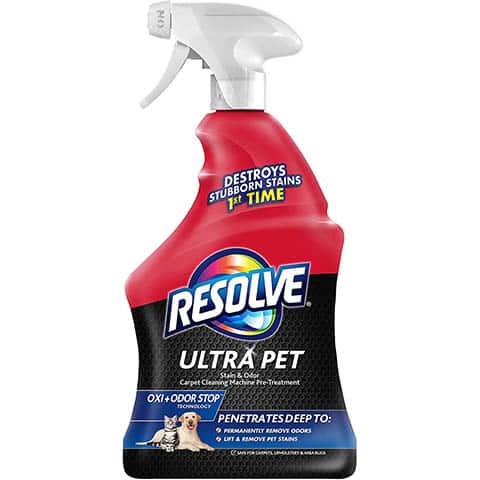
| Type of cleaner: | Soap/chemical |
| Pre-mixed cleaner?: | Yes |
| Works on: | Carpet, rugs, upholstery, fabric |
| Safe for use around cats?: | Keep away until dry |
Made by one of the most well-known carpet cleaner brands, Resolve Ultra Pet Stain and Odor Remover Spray is labeled to destroy vomit after the first application when used as directed. This is not an all-natural cleaner but is highly effective at removing both stains and odors. The product is safe around pets and kids but they should stay away until the cleaned area is dry. This Resolve spray works best on fresh vomit stains rather than older, set ones. It doesn’t require a lot of time or effort to spot clean with this spray, making it a good option for busy cat owners.
- Widely available
- Very effective
- Not an all-natural cleaner
- Doesn’t work well on old stains
9. Arm & Hammer Plus OxiClean Pet Stain And Odor Eliminator
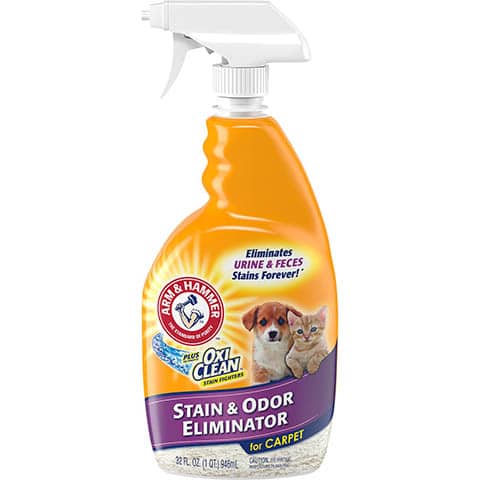
| Type of cleaner: | Oxidizing |
| Pre-mixed cleaner?: | Yes |
| Works on: | Carpet, rugs, upholstery, fabric |
| Safe for use around cats?: | Yes |
Another product produced by a well-known company, the Arm & Hammer Plus Oxiclean Stain And Odor Eliminator, combines an oxidizing cleaner with one of the oldest known all-natural odor fighters—baking soda. This product seems to work well at fighting stains and odors but not well at discouraging pets from returning to the same spot. Because this is less of an issue when dealing with vomit stains, this product is a cost-effective, safe cleaner that is widely available. Reportedly, this product works without bleaching or discoloring carpets and rugs. Easy to use and safe, the Arm & Hammer cleaner also has a nicer scent after cleaning than some of the other products we reviewed, according to users.
- Easy to use and inexpensive
- Widely available
- Nice scent
- Not good at preventing repeat messes
10. Woolite Carpet And Upholstery Cleaner Stain Remover

| Type of cleaner: | Chemical/soap |
| Pre-mixed cleaner?: | Yes |
| Works on: | Carpet, upholstery |
| Safe for use around cats?: | Yes, when used as directed |
A product that requires you to put in a bit of elbow grease, the Woolite Carpet and Upholstery Cleaner Stain Remover is a foam formula that eliminates both stain and odor. After applying the product, use the attached brush to scrub and clean up the vomit stains. Not all natural but still safe around kids and pets, this product reportedly works even on older, built-in stains. One drawback of this product is it may require multiple applications to remove a vomit stain, especially older ones. It’s also a bit messy and sometimes causes discoloration in carpets. Some users report issues with the nozzle on the can not spraying properly.
- Works on older stains
- Effective on stain and odor
- Messy and may discolor the carpet
- Nozzle doesn’t always work
- Requires some effort to use
Buyer’s Guide: Selecting the Best Carpet Cleaners for Cat Vomit
As you make your final decision about which carpet cleaner to buy, here are a few key points to consider.
Saving Money vs Saving the Planet
Carpet cleaners come in a range of prices, and as is often the case, those made with all-natural, earth-friendly ingredients are often the most expensive. As you decide between cleaners, one thing to consider is whether you’re willing to pay a little more for an eco-friendly product.
Speed vs Effectiveness
As we touched on in the reviews, some types of cleaners work a little faster than others. Enzymatic cleaners often take longer to break down stains and odors. However, they also usually do a better job of completely removing a stain than a chemical or oxidizing cleaner.
Oxidizing cleaners usually work fast but may require multiple applications, especially with older stains.
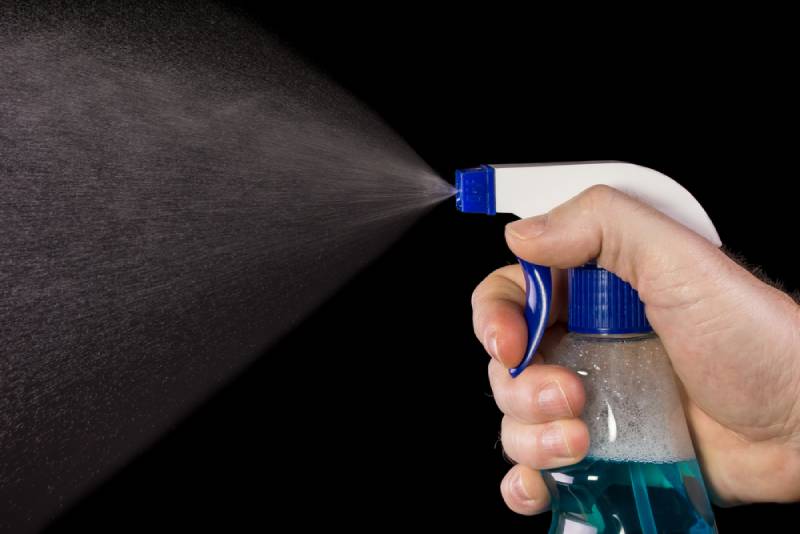
Ease of Use
If you’re in a hurry, you might prefer a cleaning product that takes as little work from you as possible. The Woolite Scrub Brush might be effective, but the Bissell Power Shot is a lot easier to use, and that might be what’s more important to you as you make your choice.
Availability
If you get caught without a carpet cleaner after a night of cat vomiting, your decision might come down to which cleaner you can most easily find at the closest store. While you may like the idea of supporting the small family business, in practicality, you need a cleaner right now and can’t wait for the mail-order product. Something like a Resolve or Arm & Hammer product is much more likely to be found on the shelves of your local big-box or grocery store.
Summary
As our best overall choice of carpet cleaner for cat vomit, Hepper Advanced Bio-Enzyme Pet Stain & Odor Eliminator Spray is a powerful enzymatic cleaner capable of safely and effectively removing vomit stains for good. Our best value choice is the Out! Oxy Fast Stain and Odor Remover offers quick and effective stain removal at a budget-friendly price.
After you have read over our reviews of these best carpet cleaners for cat vomit, consult your veterinarian if you’re concerned your cat may be dealing with a medical issue.
Feature Image Credit: Syda Productions, Shutterstock
Contents
- A Quick Comparison of Our Favorites of 2024
- The 10 Best Carpet Cleaners For Cat Vomit
- 1. Hepper Advanced Bio-Enzyme Pet Stain & Odor Eliminator Spray – Best Overall
- 2. Out! Oxy Fast Activated Pet Stain & Odor Remover – Budget Buy
- 3. Rocco & Roxie Pro Strength Pet Stain & Odor Remover
- 4. Simple Solution Extreme Stain And Odor Remover
- 5. Nature’s Miracle Just For Cats Stain & Odor Remover
- 6. TriNova Pet Stain And Odor Remover
- 7. Sunny And Honey Pet Stain And Odor Miracle
- 8. Resolve Ultra Pet Stain And Odor Remover Spray
- 9. Arm & Hammer Plus OxiClean Pet Stain And Odor Eliminator
- 10. Woolite Carpet And Upholstery Cleaner Stain Remover
- Buyer’s Guide: Selecting the Best Carpet Cleaners for Cat Vomit
- Summary















